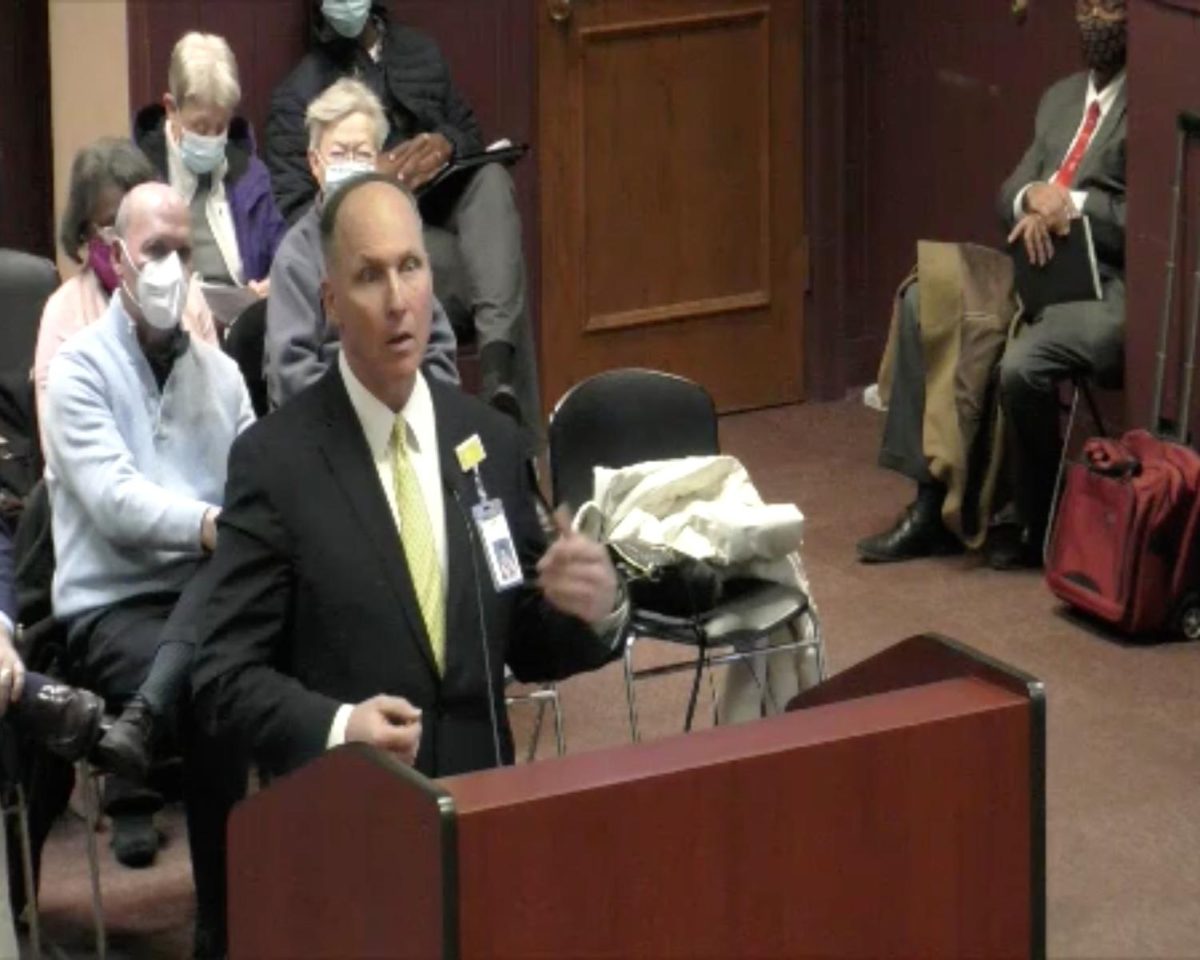New York has declared a public health emergency because of hundreds of measles cases reported in recent months. The ease of modern travel and the fact that Oxford is a temporary home to people from all over the world means local health experts are prepared for the possibility of the disease developing in Oxford.
Measles is a highly contagious respiratory disease that is caused by a virus that grows in the back of the throat, nose and in the lungs. When an infected person sneezes or coughs, the virus gets into the air and can land in a person’s nose or throat. The virus can be transmitted when a person touches an infected surface and then puts their fingers in their mouth.
There have been more cases of measles reported in 2019 than in any year since 1994, according to the Centers for Disease Control (CDC). The extremely contagious and potentially fatal disease has made a comeback due in part to a recent anti-vaccination movement gaining traction by speaking out about the ineffectiveness of modern medicines and vaccinations. There is no scientific evidence to support such claims.
The CDC declared measles eliminated in 2000, after widespread use of the effective and appropriate vaccines. That changed in 2014 when two unvaccinated Amish men from northeast Ohio returned from a trip in the Philippines to their undervaccinated community, which eventually led to an outbreak of 383 cases across nine states. Between 2014 through 2018 there were 1,433 reported cases of measles across the states which reported measles cases to the CDC.
In 2019 alone there have been 880 reported cases in the United States, according to the CDC.
The measles virus “will hang in the air as little droplets form and if you breathe in the air you get infected,” said Dr. Sharon Hutchins, supervising epidemiologist at Cincinnati Health Department.
Easy Travel Means Disease Spreads Quickly
With people traveling frequently in and out of Oxford, an individual could pick up the disease and spread it to surrounding students and community members. Measles is easily preventable with a vaccination and diligent hand washing, but some people choose not to get vaccinated.
Measles is “always a worry because an outbreak can happen with no warning,” said Stephanie Johnson, a nurse for the Talawanda School District.
With over a hundred flights going from New York City to Cincinnati and back in one weekend, someone traveling there could get infected and bring the virus back. Oxford is a compact community and has a lot of students attending school from the Northeastern part of the United States.
Some people choose not to get vaccinated, or choose not to have their children vaccinated for religious, medical or philosophical reasons. “If a parent’s child has been sick for a while, some don’t want them to continue getting more immunizations than what they already have gotten,” Johnson said.
While the Ohio Department of Health recommends that children be vaccinated against measles and other diseases. It does not require it. However, the immunization status of children must be provided to the schools, according to the health department.
“The fact that (measles) is nationwide right now and that people come here from other parts of the country puts us at a risk,” said Machel Tipton, practice manager for Miami University’s health center.
Tipton says the university does not have a protocol to run a measles test on every student who comes into the health center. The disease causes a rash, but not right away. “It would be obvious due to the rash, but with symptoms not showing up for 14-21 days there is a risk that it could be missed,” she said.
When an individual gets the measles they will get a high fever, cough, runny nose, and pink eye. Along with this, a red rash will start spreading across your body lasting around a week.
A System for Dealing with an Outbreak
If an outbreak of measles did occur in Oxford, there is a prepared plan by the university to get it under control. One of the first steps in the plan is to notify those who are not immunized with the measles vaccination. The university would “work around the clock to get that accomplished,” Tipton said.
Hutchins said there are detailed plans in case of an outbreak that are in place with most public health organizations.
The first several steps involve the individual who has the measles. “Making sure that the infected person is getting the appropriate care, finding out how they got exposed and who they have been in contact with are the things we would do first,” Hutchins said.
The next step in a public health plan Hutchins says is “to find out the people at risk of exposure, having the people at risk protected, and get a protection vaccine for those individuals.” This explains why the state health department wants schools to have student immunization histories. The final steps are “to work with other healthcare providers, use media to get the word out of the case and to set up mass vaccination clinics,” said Hutchins.
For a region to have protection against the measles virus you need a 97% vaccination rate. “Cincinnati is not at that level,” Hutchins said, “putting us at danger for an outbreak.”
Miami has a 93% prevention rate with the one measles vaccine and a 97% prevention rate with the booster shot said Tipton. However, this does not mean an outbreak could not happen here. “As professionals, we are concerned about measles, it’s our duty to be prepared for it,” she said.
Tipton believes the reality is that vaccines are extremely important in preventing the spread of disease. “It is a personal choice to get vaccinated, but there needs to be research done to fit an individual’s needs,” she said. The school actively promotes vaccinations across campus by circulating information about vaccinations and even occasionally offering free vaccinations during select times of the year.



















